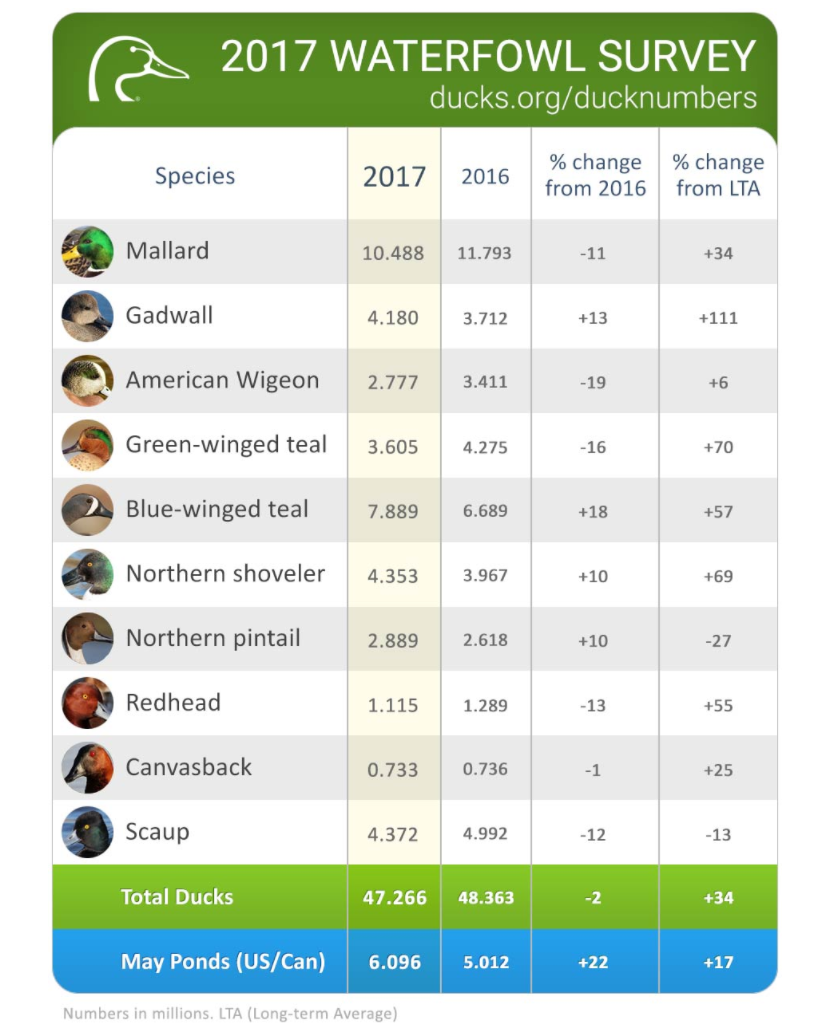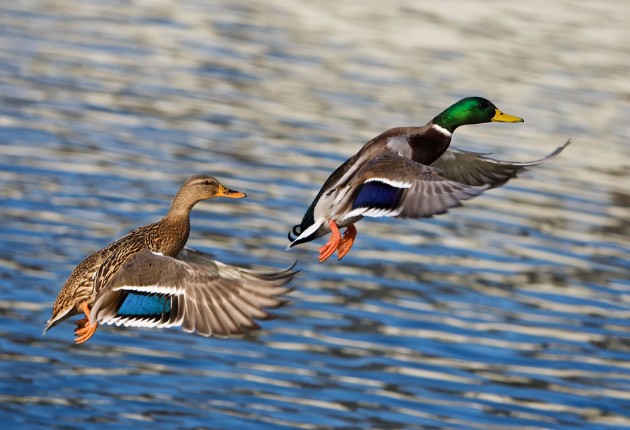The U.S. Fish and Wildlife Service has released the results of its 2017 Trends in Duck Breeding Populations survey, with good news for those planning to chase waterfowl this year. In total, the Service put the number of breeding birds at 47.266 million, a slight dip from 2016’s estimate of 48.4 million but 34 percent above the long-term average.
The USFWS and the Canadian Wildlife Service surveyed ducks during the spring of 2017 across Alaska, Canada, and parts of the north-central U.S. The results were unusual because, while the number of ducks fell by roughly 1 million, the amount of ponds available for breeding increased over the last year—up 22 percent from 5 million to 6.1 million.
“The surveys indicate that wetland conditions and populations of most frequently harvested ducks remain above the long-term average, and for most species, populations were at or above those from last year,” Ducks Unlimited Chief Scientist Tom Moorman said in a press release. “This is great news for waterfowlers, who can now turn their attention to preparing habitat, tuning up dogs, and relentlessly watching the weather forecasts for the onset of fall and winter weather that will push the birds on their annual southward migration.”
Most species saw an increase over 2016’s numbers, encouraging since 2016 was a good year in itself. Perhaps the brightest note of 2017’s survey was the northern pintail count, which put the birds up ten percent since last year. Pintails fell 14 percent from 2015 to 2016, so regaining that lost ground is crucial.
A negative in this year’s survey is the mallard, which saw an 11 percent drop since last year. The species is still 34 percent above its long-term average, so this may simply represent a return to normal for yearly averages.
The following is a breakdown of the survey’s results, courtesy of Ducks Unlimited. For more information and to find out how the survey was conducted, visit the USFWS’s website.


